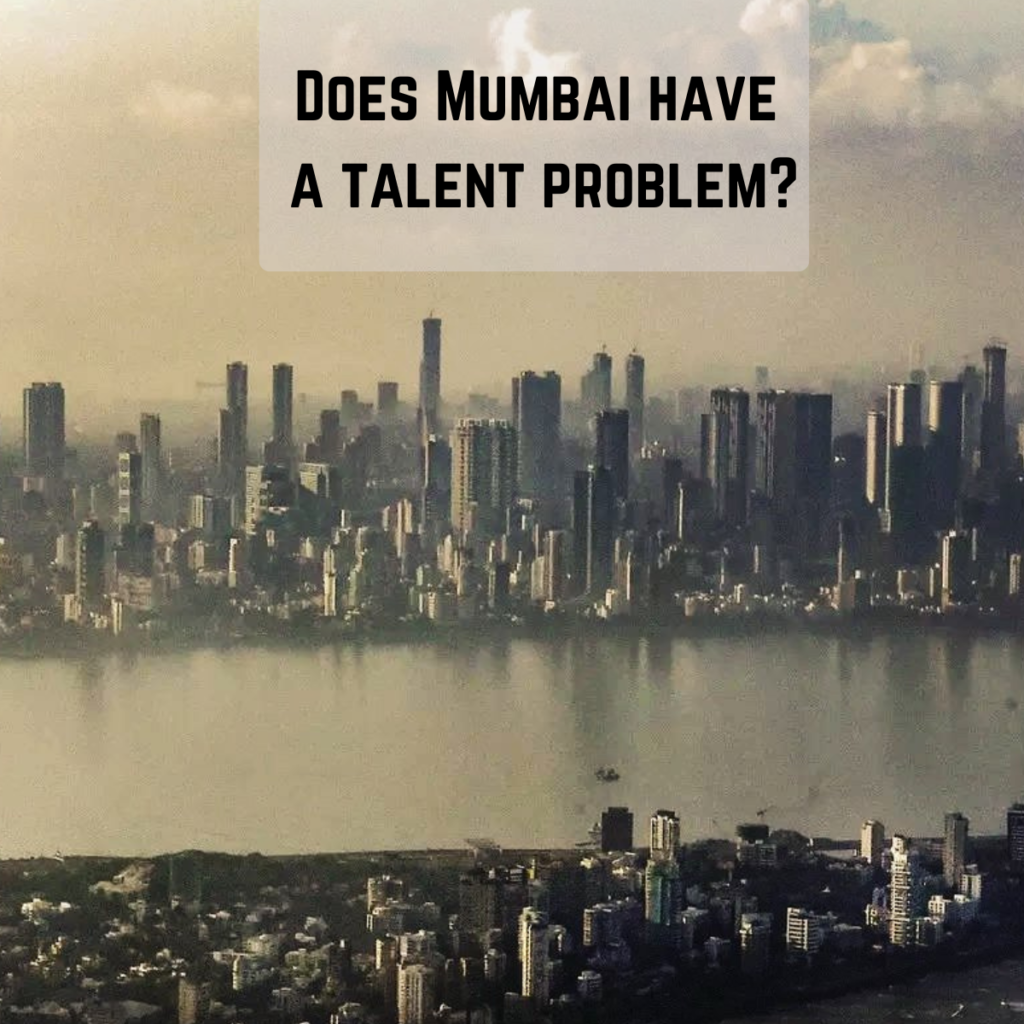Recently a friend shared a link to the latest episode of The Ken’s Podcast – Cost to Company. The key theme was the flight of talent from Mumbai to other locations and its possible impact on the future of the city. While the podcast seemed a bit alarmist, it led me to really ponder over the topic.

Mumbai is where I grew up. This is where my roots lie. But in 2018, I decided to move to Bangalore when I got a job offer from Samsung Research. The logic was simple – change. I needed to focus on other priorities in life and hence it made perfect sense then. Mumbai on the other hand remained close to my heart. I continued to write about the city, follow the trends and the news and of course, visit her shores as often as I could. Over time, I have come to appreciate the nuances of both the cities.
The primary concern of the podcast was the unavailability of tech talent. This clustering of tech-talent in hubs such as Bangalore and Hyderabad is simply a function of the number of options available to engineers. Techies in these cities are spoilt for choice, given the range of jobs in software development available here. This of course, is an outcome of enabling government infrastructure and policies which provided the initial momentum. Once the companies came, talent followed and because talent was available more companies and start-ups grew. A virtuous cycle.
Tech companies have grown manifold in the last decade. This is owing to creation of new markets – platforms offering aggregator services, e-commerce, fintech, e-wellness etc. On the same lines the industries which continue to grow but at a slower pace are pharmaceuticals, real estate, services sector including financial services & consulting and manufacturing.
One concern expressed in the podcast is that if this trend continues then Mumbai will turn into Kolkata. The city may decay. But that seems far-fetched. Over the last few centuries the nature of commerce of the city has undergone multiple changes. A port city, textile centre, epicentre of the freedom movement in the 40s and of course the commercial capital of India with home of the stock bourses and banking institutions. Most corporate headquarters are naturally centred in the city.
But the city suffers from natural limitations of space. Even though urban sprawl has made up for its burgeoning limits, this is not encouraging for newer office spaces or fresh graduates looking to migrate to Mumbai. There is scope for government intervention to create more affordable housing spaces in parcels of land which remain under litigation. At the same time creating a robust connectivity infrastructure can create rapid-transport corridors connecting the business districts with remote locations in and around the city. Additionally, embracing remote/hybrid work will reduce the real estate pressure significantly.
Finally, one must remember that all talent follows industry. And industries co-locate in clusters to reap the economies of scale. So while tech-talent may outflow, the talent required for services industry and higher order management will continue to be dominated by Mumbai. Recognising these strengths and accordingly encouraging growth is likely to create a win-win strategy for the next decade.
As for me, I will continue to visit as often as I can until finally it is time for me to come home.